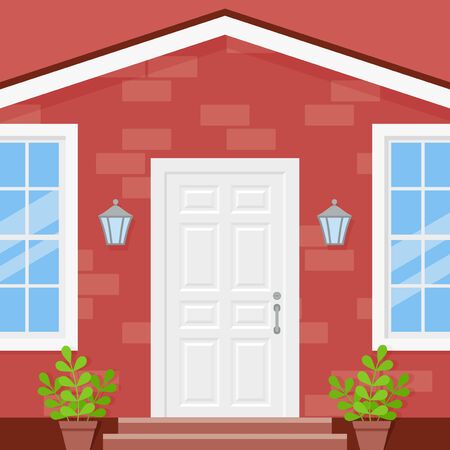1. First Impressions Start with Price
When buyers scroll through real estate listings, the very first thing they notice—even before clicking on photos—is the price. Whether it’s $399,000 or $405,000, that number immediately sets the tone for how they perceive your home. In fact, many buyers make snap judgments based solely on the listing price, often within seconds.
Why Price Creates a Mental Filter
Think of the price as the handshake before the conversation starts. It tells buyers what kind of home to expect and whether its worth their time to look further. A well-priced home feels inviting, while an overpriced one can create suspicion or even cause buyers to skip your listing entirely.
The Buyer’s Brain at Work
Buyers subconsciously compare your homes price to others theyve seen in the same area or price range. They begin asking questions like:
- “Is this house bigger or smaller than others at this price?”
- “Does it have better finishes or more updates?”
- “Why is it priced higher than similar homes?”
If your price doesn’t match what they’ve come to expect in that range, they may not give your listing a second glance—even if it has everything they want.
Price and Perceived Value: A Quick Comparison
| Listing Price | Typical Buyer Reaction | Resulting Action |
|---|---|---|
| $399,000 | “This seems like a good value—lets take a closer look.” | Might click through and schedule a showing |
| $429,000 | “Looks high for this area. Whats so special about it?” | Might skip unless standout features are obvious upfront |
| $375,000 | “Wow, could be a deal!” | Might attract multiple offers quickly |
Avoiding Instant Turn-Offs
If your homes price feels out of sync with buyer expectations in your neighborhood, you could lose attention before anyone even sees the kitchen or backyard. That’s why understanding how buyers interpret pricing is key—it’s not just numbers; it’s psychology.
This instant reaction to pricing is why setting the right number from day one matters so much. In future sections, we’ll dive deeper into strategies for choosing that perfect number and how small changes can shift buyer perception dramatically.
2. The Sweet Spot: Finding the Perceived Fair Value
When it comes to pricing your home, finding that “sweet spot” is all about understanding how buyers perceive value. It’s not just what your home is worth on paper — it’s how that price feels compared to other homes on the market. Buyers today are more informed than ever. They’re scrolling through listings, checking out neighborhood comps, and spotting patterns in pricing that influence whether they click “schedule a tour” or keep scrolling.
Neighborhood Comparables (Comps) Matter
Buyers naturally compare your homes price with similar properties nearby. If your home is priced significantly higher than comparable homes, even if you’ve upgraded the kitchen or added a new roof, buyers might still view it as overpriced unless those upgrades clearly justify the difference.
| Home Feature | Your Home | Comparable Home |
|---|---|---|
| Square Footage | 1,800 sq ft | 1,750 sq ft |
| Bedrooms/Bathrooms | 3 bed / 2 bath | 3 bed / 2 bath |
| Recent Renovations | Updated kitchen & baths | No updates |
| Listing Price | $499,000 | $475,000 |
If the buyer feels that your $499,000 price doesn’t offer enough extra value over the $475,000 comp, they may pass — or come in with a lowball offer.
The Power of Market Trends
Tuning into current real estate trends helps determine whether buyers will see your price as fair. In a sellers market where inventory is low, slightly higher prices may be accepted. In a buyers market with more options available, buyers become pickier and more price-sensitive.
Sellers Should Ask:
- Are homes in my area selling quickly or sitting on the market?
- Are prices trending up or stabilizing?
- What’s the average days-on-market for similar listings?
This context helps you avoid pricing yourself out of contention.
The Psychology Behind Price Tags Ending in 995 or 9,000
You’ve probably noticed many homes listed at $399,000 instead of $400,000 — and thats not by accident. This strategy is known as psychological pricing. Prices ending in “9” or “995” feel more attractive to buyers because they appear lower, even when the difference is minimal.
| Price Point | Buyer Perception |
|---|---|
| $399,000 | “Just under $400K” – feels like a better deal |
| $400,000 | “Over my budget” – even if only by $1K |
This tactic can also help your listing show up in more online searches. For example, a buyer filtering for homes under $400K won’t see a home listed at $400,001 — but they will see one at $399,995.
Aim for Strategic Pricing That Feels Right to Buyers
The key takeaway? Buyers aren’t just looking at numbers — they’re evaluating your home emotionally and logically. Use neighborhood comps to justify your asking price, stay tuned into local market trends, and don’t underestimate the small psychological tricks that make a big impact on buyer perception.

3. Too Low or Too High? The Emotional Red Flags
When it comes to pricing your home, going too far in either direction—too low or too high—can trigger emotional red flags in buyers that may hurt your chances of selling quickly or at the best price. Home pricing isnt just about numbers; its also about psychology. Buyers are constantly interpreting clues, and your listing price is one of the biggest signals theyll analyze.
The Danger of Pricing Too Low
While a lower price might seem like a great way to attract more attention, it can actually make buyers suspicious. They may wonder: “Whats wrong with this house?” A deal that seems too good to be true often raises concerns about hidden issues like structural damage, needed repairs, or undesirable location factors. Instead of drawing buyers in, a very low price can prompt hesitation and doubt.
Common Buyer Reactions to Low Pricing:
| Buyer Thought | Emotional Reaction |
|---|---|
| “Why is it so cheap?” | Skepticism |
| “Is something wrong with the property?” | Distrust |
| “Will I regret buying this?” | Fear of hidden problems |
The Risk of Pricing Too High
On the flip side, overpricing your home can set unrealistic expectations. Buyers may expect luxury finishes, top-tier upgrades, or a prime location—and if your home doesn’t deliver on those expectations, they’ll feel disappointed. Worse yet, many buyers won’t even bother scheduling a showing because your listing falls outside their perceived value range.
Common Buyer Reactions to High Pricing:
| Buyer Thought | Emotional Reaction |
|---|---|
| “It’s out of my budget.” | Frustration |
| “It’s not worth that much.” | Disbelief |
| “They’re not serious about selling.” | Irritation or disinterest |
Finding the Emotional Sweet Spot
The key is to find a price that feels fair and aligns with market expectations. Buyers want to feel confident theyre making a smart investment—not taking a risk or being taken advantage of. A well-priced home encourages positive emotions like trust, excitement, and urgency—motivating buyers to take action.
4. Anchoring and Price Justification
When buyers start browsing homes, they naturally begin comparing prices—and this is where the concept of “anchoring” comes in. Anchoring is a psychological principle where people rely heavily on the first piece of information they see (the “anchor”) when making decisions. In real estate, your home’s listing price often becomes that anchor point for how buyers perceive its value.
What Is Anchoring in Home Pricing?
Imagine a buyer sees two similar homes: one listed at $575,000 and another at $599,000. Even if both have nearly identical features, the lower-priced home may feel like a better deal simply because of how its positioned. That initial price sets an expectation and frames every future comparison.
Strategic Pricing to Create Value
By pricing your home strategically—just below key psychological thresholds—you can create a sense of greater value. For example, listing a home at $499,900 instead of $505,000 can make it appear significantly more affordable, even though the difference is minimal.
Price Perception Examples
| Listing Price | Buyer Perception | Psychological Impact |
|---|---|---|
| $500,000 | Standard mid-range | Seen as average; less urgency to act |
| $499,000 | Bargain territory | Feels like a deal; can trigger faster offers |
| $525,000 (competing home) | Slightly premium | Makes your $499K home look more attractive by comparison |
How Buyers Justify Prices
Buyers don’t just look at the number—they want reasons to believe they’re getting good value. When your home is priced close to or slightly below similar listings but offers comparable or better features (like updated kitchens or larger lots), it helps buyers justify your asking price internally.
Tip:
Highlight specific upgrades or unique benefits in your listing description to support your price point. This reinforces the idea that your home isn’t just cheaper—it’s smarter.
5. Price Adjustments and Buyer Perception
When a home sits on the market for a while, sellers often consider lowering the price to attract more interest. But how buyers interpret those price changes can have a huge impact on whether or not your home sells—and at what price.
How Buyers React to Price Drops
From a buyers perspective, repeated price reductions can raise red flags. They might wonder: “Why hasn’t this house sold yet? Is something wrong with it?” While some buyers may see a lower price as a great opportunity, others might think youre getting desperate or that there’s hidden damage or issues with the property.
Common Buyer Interpretations of Price Cuts
| Number of Price Reductions | Buyer Perception |
|---|---|
| 1 | The seller is adjusting to market feedback—normal and reasonable. |
| 2 | The home may have been overpriced initially; still worth considering. |
| 3 or more | The seller might be desperate; potential problems with the home. |
The Fine Line Between Strategy and Desperation
A single well-timed price adjustment can spark new interest and even lead to multiple offers. However, frequent or aggressive cuts may send the wrong message. To avoid looking desperate, each adjustment should be strategic—based on market data, showing feedback, and comparable sales in your area.
Tips for Smart Price Adjustments
- Use data: Base any changes on actual comps and local trends—not emotions.
- Avoid small drops: A $1,000 reduction might not move the needle. Consider meaningful adjustments that reposition your listing into a new price bracket where more buyers are searching.
- Time it right: Make price changes after gathering enough feedback from showings—typically 2-3 weeks after listing if no offers come in.
Create Opportunity, Not Doubt
A smart price adjustment can open your listing up to a whole new group of potential buyers who may have missed it before due to budget filters. If you relist or adjust strategically, its possible to reframe your home as “newly priced” rather than “stale.” Work closely with your real estate agent to develop a pricing timeline and messaging plan that maintains buyer confidence while keeping your listing competitive.
6. The Role of Online Search Filters and Pricing Strategy
When buyers search for homes online, they almost always use price filters to narrow down their options. These filters typically follow round-number brackets—like $250,000 to $300,000 or $500,000 to $550,000. That means where your homes list price falls in relation to these filter thresholds can significantly impact how often it appears in buyer searches.
Why Pricing Just Below a Filter Matters
Let’s say you’re thinking about listing your home at $500,000. While that might feel like a clean, solid number, there’s a catch: many buyers set their maximum price filter at exactly $500,000. If your home is priced at $500,001—even just one dollar over—it may not show up at all in those filtered results.
Example of Common Price Filters vs. Visibility
| Price You List | Buyer Filter Range | Will Your Home Appear? |
|---|---|---|
| $499,900 | $450,000 – $500,000 | Yes |
| $500,000 | $450,000 – $500,000 | Yes |
| $500,100 | $450,000 – $500,000 | No |
| $501,000 | $500,000 – $550,000 | Yes (but not seen by buyers capped at $500K) |
The Psychology Behind “Just-Below” Pricing
Pricing a home at $499,900 instead of $500,000 isnt just about filters—it also taps into buyer psychology. A home listed at $499,900 feels more approachable and less intimidating than one priced at half a million dollars flat. It creates a perception of value and affordability that encourages more clicks and showings.
Boosting Engagement Through Strategic Pricing
Because online visibility is often the first step to scheduling a showing or making an offer, getting your pricing right can make or break your listing’s performance. Homes priced just under major filter cutoffs often get more views and generate more interest simply because they are being seen by more potential buyers.
Pro Tip:
If youre close to a major price threshold—say your agent suggests pricing between $495K and $505K—opt for something like $499K or $499,900 to maximize exposure on both ends of the filter spectrum.
In today’s digital-first real estate market, understanding how buyers search—and how platforms display listings—can give you an edge. Smart pricing isn’t just about what your home is worth; it’s also about knowing how to make sure the right people see it.

